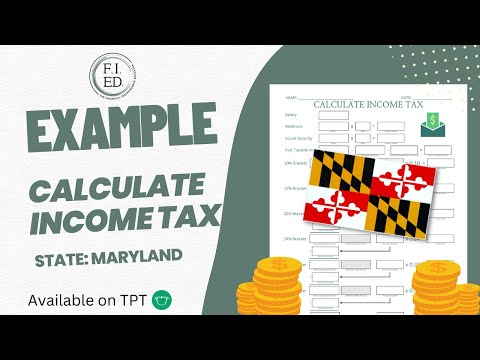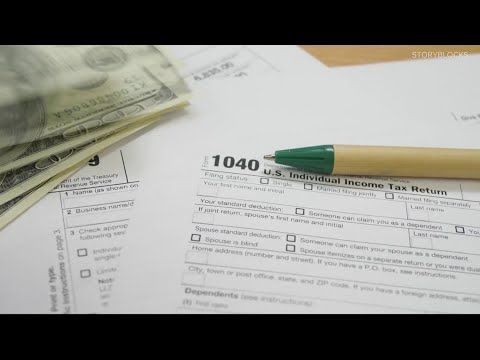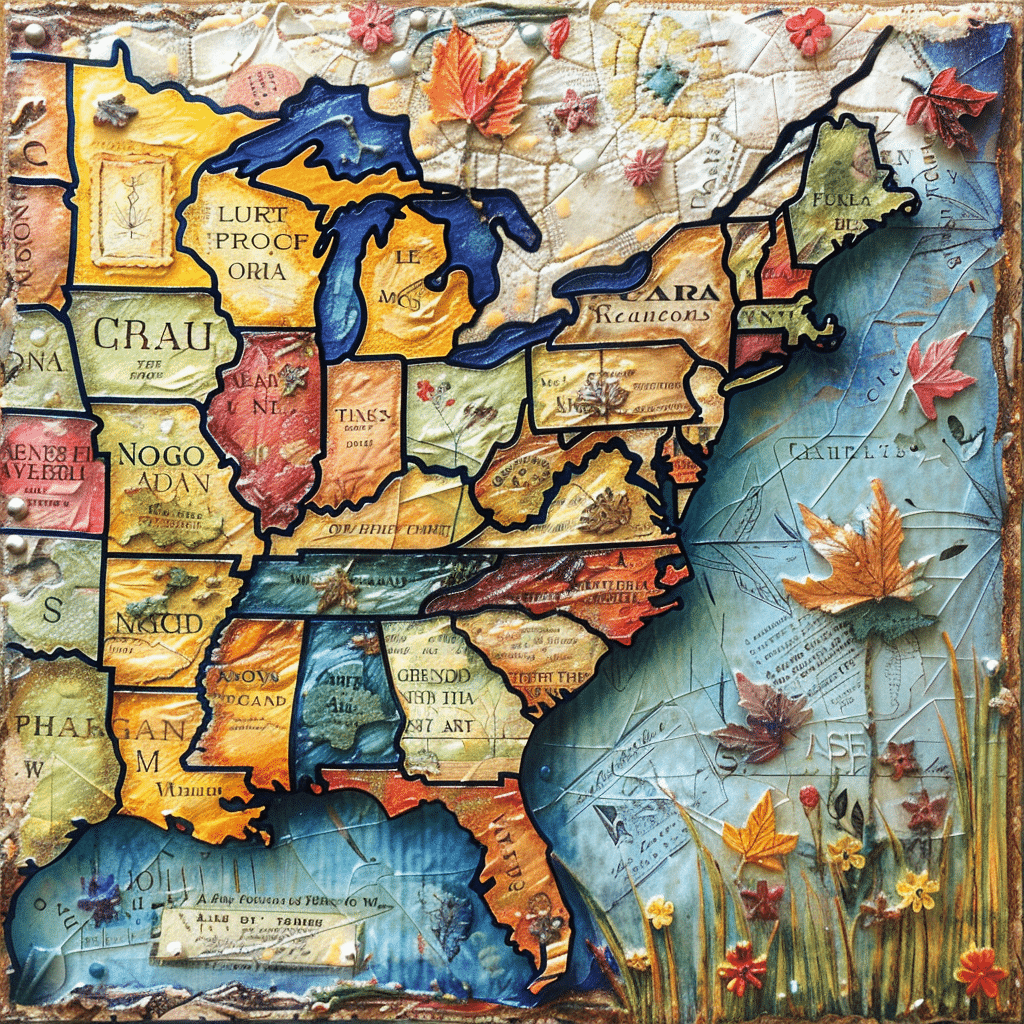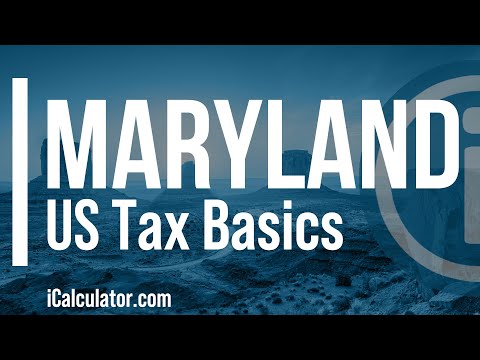Navigating the intricacies of state taxes can be as bewildering as trying to understand a David Lynch film—confusing, surprising, and often leaving you with more questions than answers. But fear not! Today, we’re diving deep into the riveting world of Maryland state taxes, shedding light on aspects that might just make you drop your crab cake in astonishment. So, buckle up, dear reader, let’s explore some tax truths that are as surprising as finding out that the quiet neighbor next door is a rock star on the weekends.

Exploring the Uncommon Complexity of Maryland State Taxes
When it comes to tax structures, Maryland is like that puzzle you try to solve on a lazy Sunday afternoon—it’s complex, intricate, and gives you a sense of accomplishment once you understand it. Unlike the flatter landscapes of straightforward tax states, Maryland’s tax system is more like the rolling hills of Appalachia, with variances that make it stand out from the pack.
Here’s what makes Maryland’s tax system unique: it’s like a patchwork quilt, where each patch represents a different jurisdiction, each with its own color and texture in the form of local tax rates. And just when you think you’ve seen the whole picture, you uncover another layer underneath.

Fact #1: Maryland’s Progressive Income Tax Structure
In Maryland, income taxes operate on a sliding scale faster than sliders at a baseball game. Starting at a modest 2% for the first $1,000 of taxable income, these rates climb to a significant 5.75% for incomes soaring over $250,000 (or $300,000 for folks filing jointly, heads of household, or qualifying widow(er)s). This progressive structure means that whether you’re earning a modest income or raking in the dough like an A-list celebrity, the tax rate adjusts accordingly.
What makes Maryland’s income tax intriguing—and perhaps a tad peculiar compared to those flat-tax states—is that it adds more layers than a gourmet lasagna. Higher-income earners might feel the pinch more than in states where the tax rate is a one-size-fits-all affair.

| Category | Details |
|---|---|
| State Income Tax Rates | – 2% on taxable income up to $1,000. – Graduated rates up to 5.75% on taxable income over $250,000 ($300,000 for joint filers/heads of household/qualifying widow(er)s). |
| Tax Year | 2021 (Notable for rates and brackets; check for current rates as they may change annually.) |
| Retirement Tax Friendliness | Moderately tax-friendly for retirees, with Social Security benefits exempt from taxation. |
| Sales Tax | – 6% state sales and use tax. – No additional local sales taxes. |
| Corporate Income Tax | 8.25% |
| Payment Deadlines | – If filing electronically and paying by check/money order: Due April 15. – If filing electronically and paying electronically: Extended deadline to April 30. |
| Tax Filing Deadline (2023) | April 18, for those filing on a calendar year basis. |
| Estimated Tax Payments | Required quarterly if tax liability exceeds $500 more than what’s withheld by employer. |
| Local Income Taxes | – Counties levy local income taxes ranging from 2.25% to 3.20%. – These are in addition to the state income tax. |
| Withholding Guidelines | – Income tax rate ranges from 2% to 5.75%, depending on income and filing status. – Tax brackets and rates are subject to change; check for updates. |
Fact #2: The Reality of Local Income Taxation in Maryland
So you think the state tax is the only slice? Think again. Maryland adds a little local flavor to its fiscal pie by allowing counties to collect their own income taxes. Picture this: if you’re enjoying the cherry blossoms in Montgomery County, you could be shelling out a local tax rate higher than if you’re dangling your feet off a dock in Somerset County. It’s essentially a tax kaleidoscope, where the patterns shift dramatically depending on where you plant your roots in the Old Line State.
Montgomery County, for instance, might hit you with a local tax rate of 3.20%, while Somerset County could be more wallet-friendly at around 3.15%—seemingly small numbers that can add up like calories at a food festival. It’s a system as diverse as the state’s landscapes, from the bustling Inner Harbor of Baltimore to the serene waters of the Chesapeake.

Fact #3: Maryland’s Estate Tax: A Rarity Among States
Let’s talk about the final curtain call: estate taxes. In a move that’s rarer than a blue moon, Maryland imposes an estate tax that can affect what you leave behind for your loved ones. The Free State plays by its own rules, setting thresholds and rates that differ from the federal estate taxes. So even after bidding adieu to this mortal coil, your fiscal relationship with Maryland continues—like an encore performance that you never expected.
Specifically, Maryland’s estate tax kicks in when the value of the deceased’s estate exceeds a certain amount, leading to complex maneuvers for residents looking to pass on their legacy. It’s financial planning that requires as much foresight as a chess grandmaster planning their opening moves.

Fact #4: The Sales Tax Quirk: Exemptions That Might Surprise You
Move over, boring tax talk—the Maryland sales tax has entered the chat, and it’s brought a list of exemptions that could make a tax accountant blush. Sitting at a steady 6% for most tangible goodies, the sales tax might seem standard. But the exemptions are as unpredictable as a twist ending in a thriller novel.
For instance, while you’ll have to fork over taxes for that snazzy Jabra headset you’ve been eyeing, you might not have to pay a dime in sales tax on that medical prescription you picked up. Comparatively, when you look at the Taxes in Virginia, you’ll notice subtle differences that can influence a cross-border shopping spree, potentially saving you as much as Cinderella saved on her pumpkin carriage.
Fact #5: The Tax Benefit Many Homeowners Overlook
Imagine discovering an overlooked gem of a tax benefit, hidden in plain sight like a secret passage in an old mansion. Maryland homeowners, take note: the Homestead Property Tax Credit is that gem. It’s like a financial invisibility cloak that can protect you from significant increases in your property taxes, ensuring that your home remains your castle without draining your treasury.
For those wondering, “Do I need an insurance check claim to benefit? rest easy. This tax credit automatically applies to your property, provided you meet certain criteria. This is one time where reading the fine print can feel more rewarding than the plot twist in a bestselling novel.
The Technology Edge in Maryland Tax Collection
Maryland’s tax scene is as technologically savvy as a teenager with the latest smartphone. The state employs cutting-edge methods to collect taxes and ensure everyone pays their fair share. The use of data analytics to sift through information is as detailed as a detective combing through clues with a magnifying glass, although privacy watchdogs may wag their fingers with concern.
But when it comes to duty, the maryland taxation And assessment department is like a superhero using its powers for the greater good, ensuring tax evasion is as rare as a ghost at a summer barbecue.
Analyzing the Economic Impact of Maryland’s Tax Policies
Looking at Maryland’s tax policies is like analyzing an impressionist painting—the closer you look, the more details emerge. The economic implications ripple across the Bay like a stone skipping across the water, affecting everything from business growth to consumer spending patterns. It’s a fiscal ecosystem as delicate and interconnected as a Chesapeake Bay estuary.
Maryland’s tax laws can influence everything from a small business’s decision to set up shop to a retiree’s choice to settle down for the golden years. It’s a balancing act that the state performs with the precision of a trapeze artist at the circus.
An Innovative Conclusion: Looking Ahead at Maryland State Taxes
By now, you’ve likely realized that Maryland’s tax system has more layers than a winter outfit in the midst of a nor’easter. As we look ahead, these tax trends—like the fashion world—might evolve or revolve, continuing to surprise us with new patterns and rules to adapt to.
Yet, throughout these fiscal fluctuations and changing tax landscapes, what remains constant is the importance of staying informed and seeking savvy strategies—just as you would turn to professionals for advice on making your next Redgifs or finding out the scoops about ariana Grande Ethan slater—to navigate your tax path in Maryland.
Understanding your taxes isn’t just about meeting obligations; it’s about finding opportunities, much like spotting a rare blue crab in the bay or having a chance encounter with Wendi murdoch at a gala. And when it comes to home sweet home, remembering the benefits like the Maryland Homestead Tax Credit can be as satisfying as sitting back in your Annapolis waterfront property, knowing you’ve got a handle on it all.
So there you have it, the colorful tapestry that is Maryland taxes—woven with complexities, splashed with quirks, and highlighted with unexpected benefits. It’s the knowledge of these facts that gives you an edge, whether you’re crunching numbers or sipping locally brewed craft beer on your porch, mindful that in Maryland, taxes are more than just a line item; they’re a part of life’s rich mosaic.
Bizarre Twists in Maryland State Taxes
Ever feel like tax codes are as complex as a movie plot? Well, buckle up—Maryland’s got some plot twists that might just need a spoiler alert! We’re diving into the intricate world of Maryland state taxes, where things are sometimes as unexpected as a fairy tale transformation.
When Tax Brackets Pull a Cinderella Move
Ever heard of brackets getting a fairytale makeover? In Maryland, high income doesn’t always mean happily ever after. Folks earning more get bumped into steeper taxes faster than you can say “Bibbidi-Bobbidi-Boo!” In a state where the story of income tax brackets reads more like the cast list of a modern retelling of a fairy tale, you’d be surprised to find your wallet playing the role of the losing glass slipper. And no, I’m not talking about that enchanting Cinderella 2015 cast. This tale is all about the tax brackets!
The Local Income Tax: A Friendly Neighbor or Party Crasher?
Hold onto your crab cakes—it’s not just state taxes that’ll sneak up on you. Every county in Maryland throws its own local income tax shindig. That’s right, tax rates that shimmy on top of your state taxes like a crab on Old Bay. While you might think you’re only dancing with the state, don’t be startled when these local percentages tap you on the shoulder! It’s like a surprise guest at your party, except this one’s helping themselves to your wallet, not just the punch bowl.
The Sneaky Side of Tax Credits
Now, tax credits can be like finding cash in your sofa, right? Well, get this: some of Maryland’s tax credits are like winking fairies offering you a magical boost. But don’t be fooled, navigating through them can be trickier than trying to spot a leprechaun! They’re selective, and you’ve got to qualify, as if picking the right pumpkin for your carriage. Some might say it’s about as hard as casting for a beloved fairytale movie. No, really—I’m talking about a process as meticulous as selecting the “Cinderella 2015 cast”!
Property Taxes: Not the Magic Carpet Ride You Hoped For
And just when you thought you’d soared away from surprises, property taxes swoop in. They’re the carpet ride through Maryland’s fiscal skies—steady and can’t be bypassed. Unlike a genie’s three wishes, these rates stick around with no magical escape. Bummer, I know.
The Ghost of Sales Tax: There, But Not There
Now here’s a hoot: food and prescription drugs are like ghosts when it comes to sales tax. They’re there, but poof—the sales tax disappears on ’em. It’s like they’ve got an invisibility cloak, hiding right in the open. However, grab anything else off the shelf and the sales tax genie reappears, adding its own numbers to your total like an autograph signing after a big movie premiere.
And there you have it, a whimsical peek behind the curtain of Maryland state taxes that proves sometimes truth really is stranger than a fairy tale. Or, at least, as intriguing as the tales weaved by a star-studded “Cinderella 2015 cast.” Keep your coin purse close, and may your tax season be ever in your favor!

What is the state income tax in Maryland?
– Whoa, talk about taxes! In Maryland, you’re looking at state income tax rates that kick off at a breezy 2% on the first $1,000 of taxable income and climb up to 5.75% when you hit over $250,000 for single filers, or $300,000 for the joint-filing lovebirds, heads of household, or the qualifying widow(er)s out there. Remember, it’s a sliding scale, so your tax will shuffle up depending on how much you rake in.
Is Maryland a tax friendly state?
– “Tax-friendly” can be kinda subjective, but for retirees, Maryland plays nice in the sandbox. Yes, the Old Line State grabs a slice of your pie with income and sales taxes, but it’s moderately tax-friendly when it comes to retirement income. So, if you’re dreaming of Chesapeake Bay sunsets in retirement, Maryland won’t rock the boat too much with taxes.
What is the Maryland state income tax rate for 2023?
– For 2023, don’t expect any shocking news; Maryland is keeping it steady with individual income tax rates ranging from 2% to that top tier of 5.75%. Keep in mind, if you’re lucky enough to be rolling in dough, the higher rates are part and parcel of the deal. And don’t forget, some local jurisdictions will want their cut too!
Is there state sales tax in Maryland?
– You betcha! Whether you’re snagging a deal in-store or clicking “add to cart” online, Maryland is pocketing a 6% sales tax on all those tangible goodies you’re scooping up. So, every time you splurge, Maryland’s got its hand out for that sales tax — no ifs or buts.
Is Maryland a high tax state?
– Is Maryland a high tax state? Well, that’s a question that could spark a hearty debate at a crab feast. It’s perched somewhere in the middle. With rates up to 5.75% for income tax, a 6% sales tax, and local income taxes too, it’s not the lowest around, but hey, it’s not the highest either.
Is Maryland a tax friendly state for retirees?
– You’ve heard it said before, and I’ll echo it: Maryland is pretty darn accommodative for retirees looking to chill out tax-wise. With exemptions like not taxing Social Security and other retirement income perks, retirees get a tad more bang for their buck here.
What isn’t taxed in Maryland?
– In Maryland, you’ve got a lucky list of items enjoying a tax-free life, including precious prescription meds, some farm equipment (fancy some tax-free tractors, anyone?), and residential energy sources. So remember, sometimes it’s what’s not in your bill that counts.
At what age do you stop paying property taxes in MD?
– The Golden Years in Maryland don’t come with a golden ticket to stop paying property taxes entirely, but seniors can catch a break with certain tax credits, like the Homeowners’ Property Tax Credit. Alas, no magical age where taxes disappear, but these programs do lighten the load.
What is tax free in Maryland?
– Maryland’s tax-free treasures include your wardrobe essentials and school supplies during the much-anticipated Shop Maryland Tax-Free Week. Plus, certain energy-efficient appliances have their own tax-free moments. It’s like holiday shopping without the tax hangover!
How much is 100k after taxes in Maryland?
– Oh, the $100k question! Crunching those tax numbers is tricky without getting personal, but ballparking it, if you make $100,000, you could be waving goodbye to approximately 6% in state taxes, plus that local tax bite. It’s all about brackets, deductions, and perhaps a little magic from those tax credits.
Is Social Security taxed in Maryland?
– Good news for the Social Security bunch – Maryland doesn’t snip anything off your Social Security benefits. That’s one less thing to worry about in retirement, so you can keep doing your happy dance about that.
What state has the highest taxes?
– Drum roll for the high-tax title… and it often goes to places like California or New York. High incomes in these states mean a rendezvous with some of the loftiest state taxes in the land, but it’s a toss-up depending on property, income, sales taxes, and more.
Are groceries taxed in Maryland?
– Navigating grocery aisles in Maryland is pretty sweet because groceries aren’t taxed. It’s one thing to see your shopping cart pile up but knowing there’s no tax tacked on at the end? Priceless!
Which states have no income tax?
– Wouldn’t it be peachy to keep it all? Some U.S. states say “no thanks” to income tax, like Florida, Texas, and Washington. Shacking up in one of these states means you don’t have to share your hard-earned dough with the state government.
Is Maryland good place to live?
– “Good” is subjective, but many find Maryland a crab-tastic place to live, with its rich history, diverse cities, and that Chesapeake charm. High cost of living and taxes? Maybe. But great seafood, strong education, and cultural experiences? Definitely!
Are taxes lower in Virginia or Maryland?
– Alright, let’s talk rivalry: Virginia versus Maryland in taxes! Virginia’s income tax rates are a smidge lower, topping off at 5.75% compared to Maryland’s same max rate but with added local taxes. So, Virginia could edge out Maryland for lower taxes, but it’s all about the details.
Which states have no income tax?
– We’ve got some sunny states playing the no-income-tax game—think Florida and Texas, where both your tan and your paycheck get to stay intact. You’ll find seven in total where your pay is your playground, no income tax to cramp your style!
Do you pay local taxes where you live or work in Maryland?
– In Maryland, local taxes get personal: you pay where you live, not where you clock in. So, your cozy abode dictates the local taxes you dish out, whether you’re commuting across town or trekking across the state.
Does MD tax Social Security?
– For the Social Security gang: Maryland’s rolling out the welcome mat by not taxing those Social Security benefits. Yep, you can keep all those bucks to splash out on more fun, or y’know, the essentials.



